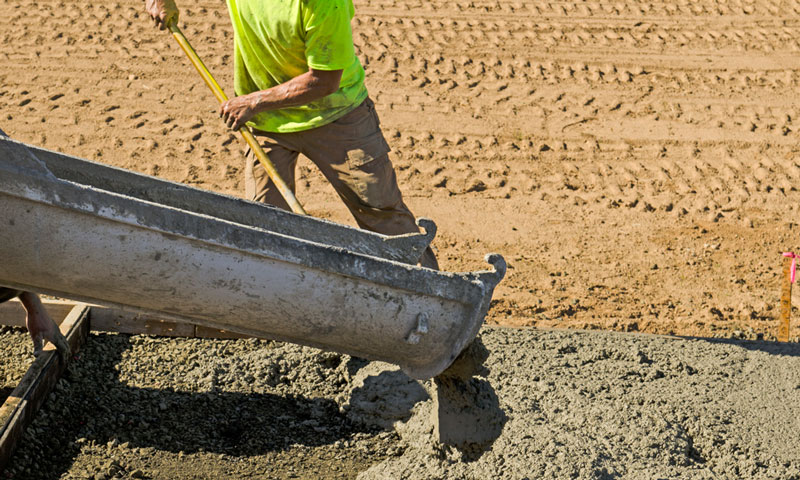
Portland Cement Concrete
- Durable
- Low Maintenance
- Rough Surface Provides Good Traction
- Attractive Surface Treatment
Description
Concrete is a mixture of Portland cement, a fine aggregate (sand), a course aggregate (gravel), water and chemical additives. Through a process called hydration, the cement and water harden and bind the aggregates into a rocklike mass. As the excess water in the mix evaporates, it leaves capillaries throughout the slab much like a sponge. We use an air entrained concrete mix which creates tiny air bubbles in the mix that help reduce or absorb stresses from freeze/thaw cycles. Additionally, fiber can be added to help minimize cracking and reduce permeability.
The Difference Between Cement and Concrete
Although the terms cement and concrete often are used interchangeably, cement is actually an ingredient of concrete. Cement comprises from 10‐15 percent of the concrete mix, by volume.
Application
Extreme temperatures make it difficult for the hydration process to take place. When it is too close to freezing, the hydration slows to a standstill and the concrete will not cure and gain strength. On the other extreme, when it is very hot, too much water is lost by evaporation and care must be taken to keep the concrete wet. It is very important to maintain proper moisture levels in new concrete in its early stages of hydration and protect it from the sun and wind. We use Kure‐n‐Seal, which is a curing compound that helps seal the new concrete which slows down evaporative loss of hydration water.
Sub‐base: All topsoil should be removed. A smooth stone/gravel sub‐base should be installed and compacted so that the slab has a uniform thickness. The sub‐base should be properly graded so water flows away from any structures. As a rule of thumb, the base should slope .” for every linear foot to provide proper drainage. We recommend a 4” thickness for sidewalks and 5” to 6” for driveways, depending on the type of vehicular traffic. We recommend a simple ‘broom finish’ to provide traction and a clean aesthetic look.
Composition
There are many different mixes of concrete for different applications. In our market, most of the mixes involve adding more Portland cement which affects the strength of the concrete. We typically use a 6‐ó bag of Portland mix that has a compressive strength rating of 3500 psi for sidewalks and 4000 psi for driveways.
Durability
Concrete actually gets stronger as it gets older, as the curing process continues for years. As it cures, concrete shrinks roughly ó” for every 100 linear feet. The hydration process happens rapidly at first and then slows down and so the standard has become that all concretes are rated at their 28‐day strength. All concrete will crack to some extent. Control joints . the thickness of the slab should be put in the concrete to provide a place for stress relief.
Maintenance
Any cracks that appear in concrete are not addressed until they become 1/8” to .”. At that point, the crack can be ground out and caulked with a self‐leveling Polyurethane concrete joint/crack sealant. The caulk should be tack free within 2 hours and cures fully within one to two weeks.
Just a Note!
In regions such as ours where we have severe freeze thaw cycles, water can get into the concrete, freeze and expand as much as 9%, causing small pieces of the concrete to chip off or spall. During freezing conditions, we do not recommend the use of salt. Salt melts ice and allows the water to penetrate into the mass of the concrete. The Portland Concrete Association recommends the use of sand/cinder chips during its first season.
Signs and Bollards
Hager Paving also offers installation of signage such as handicap parking, no parking, and fire lane; and maintenance of existing signage to Federal standards.


